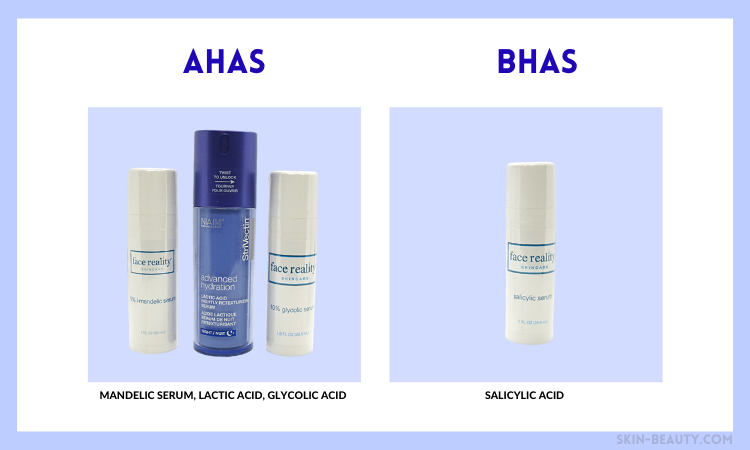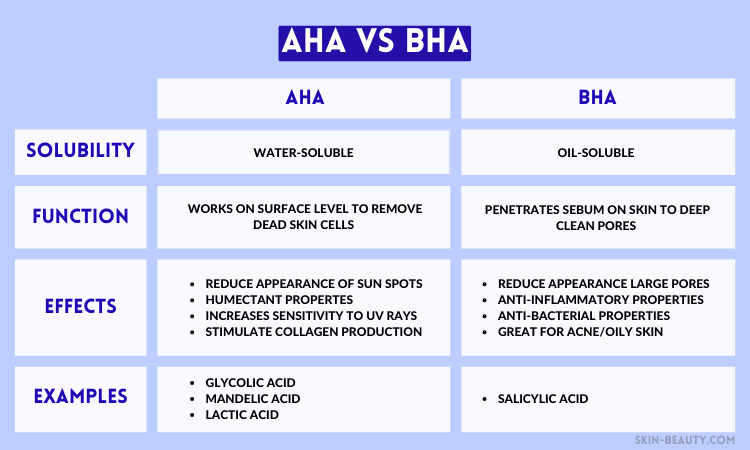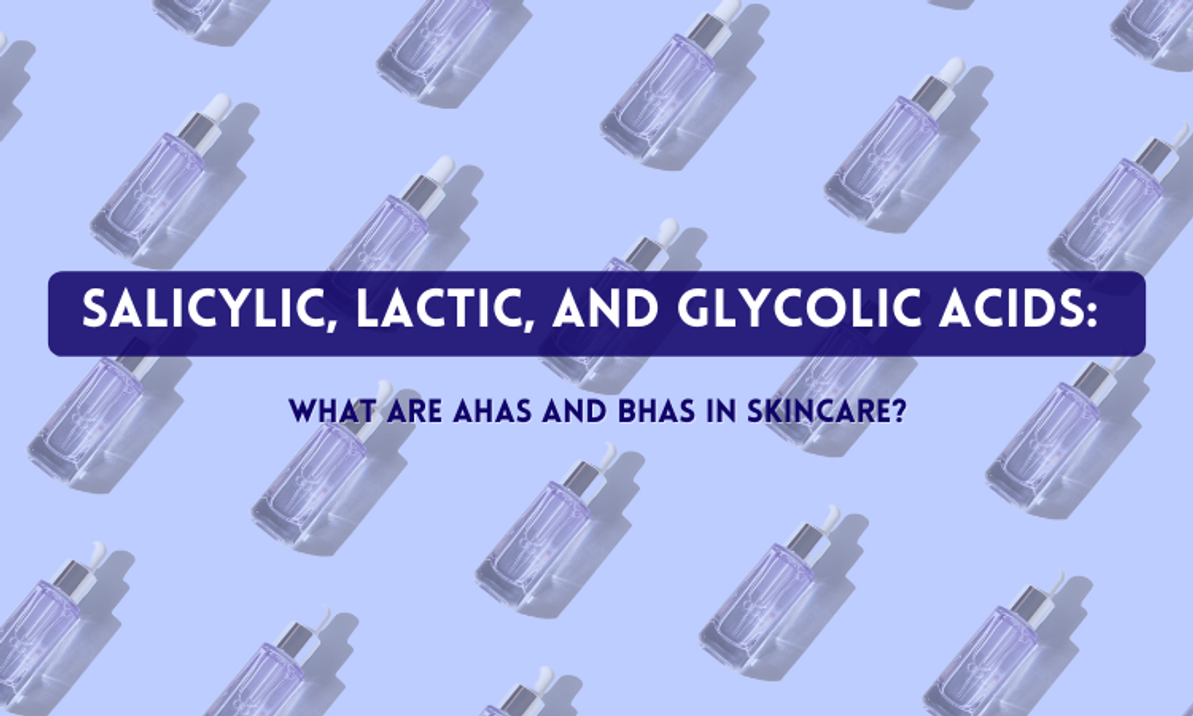Salicylic, Lactic, and Glycolic Acids: Explaining AHAs and BHAs in skincare
We have all heard about AHAs and BHAs and how we must use them in our routine to achieve the ultimate flawless skin. But has anyone explained what AHAs and BHAs are? When I shop for my products, the ingredients are labeled as glycolic acid, salicylic acid, or lactic acid. So which ones are AHAs, and which ones are BHAs?
What are AHAs and BHAs?
AHAs (alpha-hydroxy acids) and BHAs (beta-hydroxy acids) are categories of acids derived from natural or organic ingredients. AHAs in skincare are commonly derived from sugar cane and have strong exfoliating properties that can make your skin more sensitive to UV rays. The most common and widely known/used BHA in skincare is salicylic acid, derived from willow bark extract. It features anti-inflammatory and antibacterial properties making it an ideal ingredient for acne-prone skin. Both AHAs and BHAs can have anti-aging and exfoliating properties, so they are widely used in skincare products.

What is the difference between AHAs and BHAs?
AHAs and BHAs are potentially great ingredients that can do similar things, but they are different! One key difference is that AHAs are water-soluble, and BHAs are oil soluble. This means that AHAs work on the skin's surface while BHAs work on the skin's surface AND within the pore, as BHAs can penetrate the sebum that sits on the skin. BHAs are also considered the milder of the two, and some people may experience more skin irritation with AHAs (such as glycolic acid).

Types of AHAs
Some common Alpha Hydroxy acids (AHAs) you may see in skincare include:
- Glycolic Acid: A fruit acid that is most commonly derived from sugarcane, its small molecular size makes it the most active AHA. This AHA is also the strongest, and some people may find it too irritating for their skin. It has been shown to improve the production of elastin and collagen, which is why it may be featured in anti-aging skincare products.
- Lactic Acid: This AHA is derived from milk and features a larger molecule size meaning it doesn't penetrate as deeply as other acids. It works mainly on the skin's surface, offering a gentle form of firming and exfoliation. This makes it a better alternative for those with sensitive skin. Lactic acid is a widely used AHA because it is gentle enough to be incorporated into any skincare routine and offers anti-aging, moisture-locking, and acne-fighting benefits.
- Mandelic Acid: Derived from bitter almonds, Mandelic acid is a mild AHA usually used with other ingredients. It has strong exfoliating properties making it an excellent option for renewing the skin, reducing the appearance of fine lines, brightening the skin, and reducing hyperpigmentation. It is also one of the few ingredients that work well against fungal acne.
- Tartaric Acid: This AHA is derived from grapes and is used as a stabilizer in skincare products.
- Citric Acid: A weak AHA derived from citrus fruits, it is commonly used as a stabilizer.
Types of BHAs
The most common BHA in skincare is Salicylic acid.
- Salicylic Acid: This BHA is oil-soluble, allowing it to penetrate through the oils of your skin to dissolve any debris that can clog the pores. Its ability to cleanse the pore also makes it an excellent exfoliant as it loosens the "glue" holding our cells and the outer layer of skin. This allows exfoliation and unclogging of the pores. These characteristics make salicylic acid an essential ingredient for acne skincare products.

Using AHAs and BHAs together- Can I use AHAs and BHAs together?
Now that we know which acids are AHAs and BHAs, it's time to figure out how to combine them. A few tips to remember when combining these two acids are:
- Patch test them so you can see how your skin reacts
- Do not overuse them, as that can cause skin irritation.
- Use SPF afterward.
- If you want to use both an AHA and BHA, alternate them.
The best way to combine any AHA or BHA is to alternate use of them, either use one in the morning/night or alternate days.
For example, if you have acne-prone skin but want to avoid using Salicylic acid (BHA) every day, you can add Lactic acid (AHA) into your routine. But to properly use them, you can use your lactic acid in the morning and your salicylic acid at night, or use your lactic acid product one day and your salicylic acid product the next.
AHAs and BHAs are one of the most asked about things in skincare. It takes some research to know which acids are alpha and beta and how to combine them with other powerhouse ingredients like Vitamin C. But by knowing what to look for, you can pick the right product for your skin concerns.
Recent Posts
-
The Power of Exosomes in Skincare
Exosomes in Skin Care: The Future of Exosome and Regenerative Medicine in Skin Science Skincare inn …Oct 17th 2025 -
Steps for a Skincare Routine
6 Steps to a Proper Skin Care Routine: Your Esthetician-Approved Guide to The Best Skin If you've ev …Aug 11th 2025 -
Treatment of Hyperpigmentation
How to Treat the Appearance of Hyperpigmentation This Summer: Your Complete Guide Summer sun is wond …Jul 17th 2025




